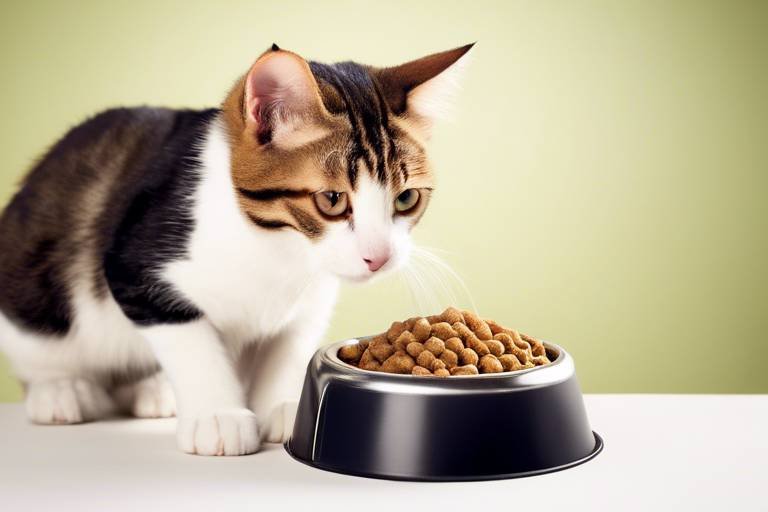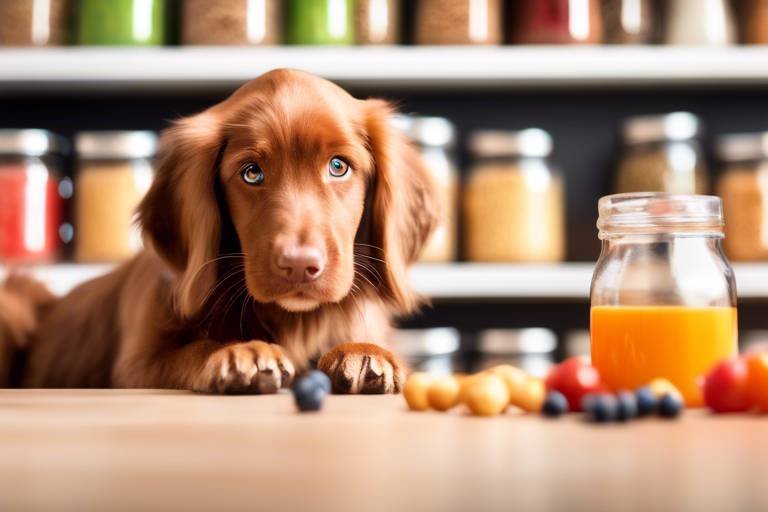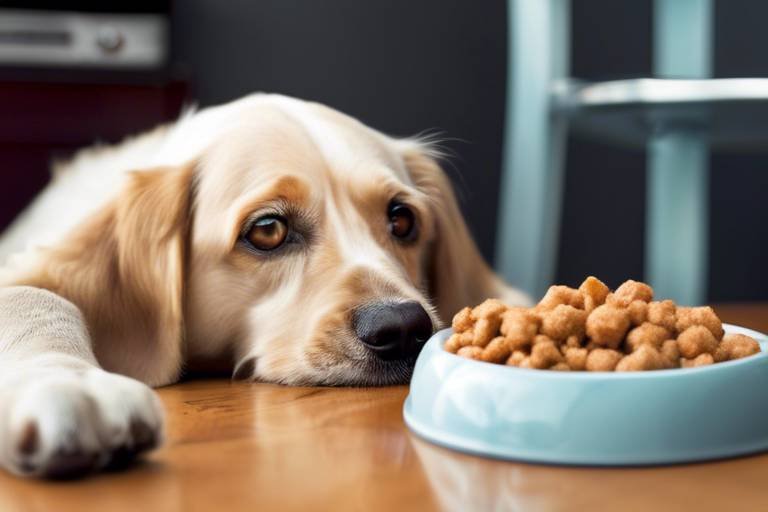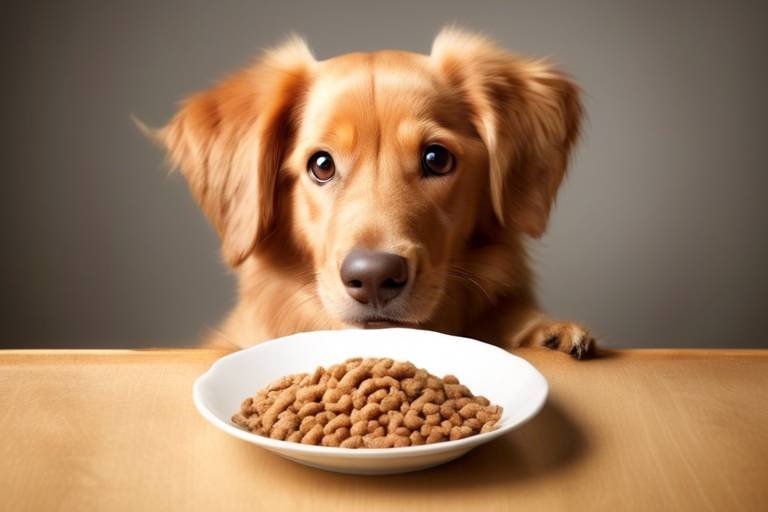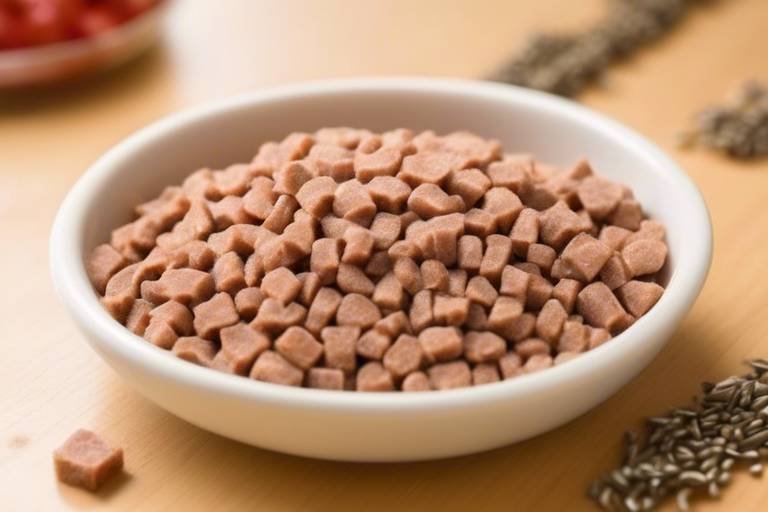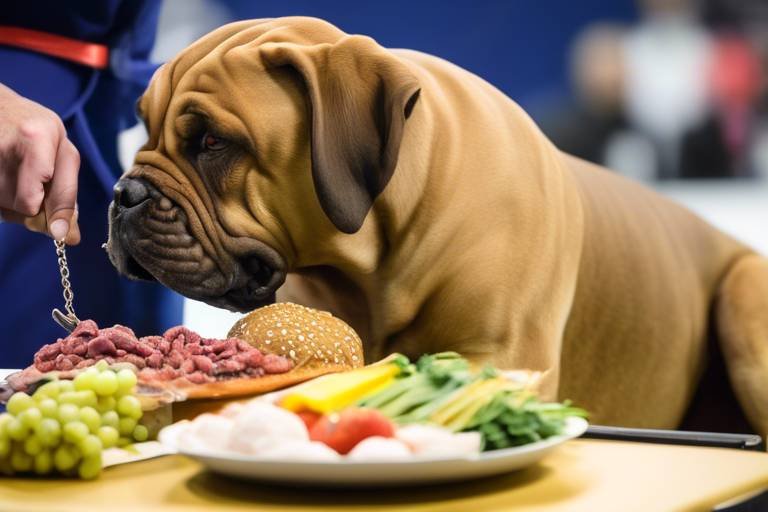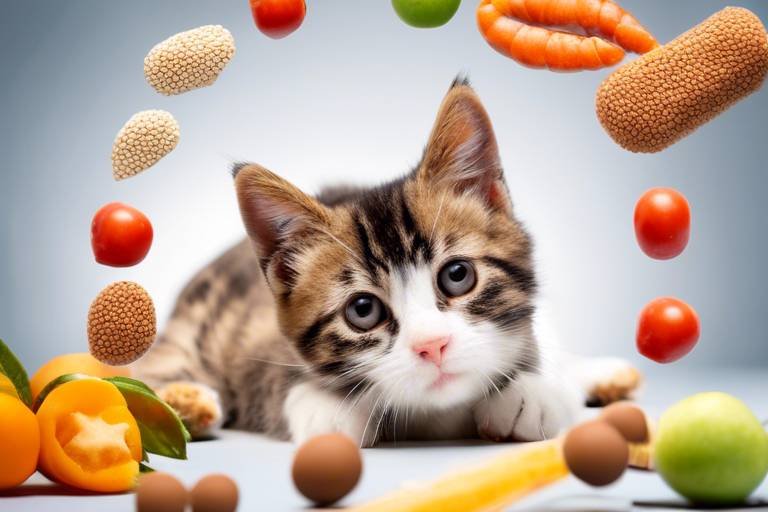Tips for Choosing the Right Cat Food
Choosing the right cat food for your furry companion can feel like navigating a maze, especially with the overwhelming variety of options available today. It's not just about picking a bag off the shelf; it's about understanding your cat's unique needs and how to meet them through their diet. Just like humans, cats have specific nutritional requirements that must be fulfilled to keep them healthy and happy. This article provides insights into selecting the best cat food for your feline friend, covering essential factors such as nutritional needs, ingredient quality, and specific dietary requirements.
Understanding your cat's nutritional needs is crucial for their health. Cats are obligate carnivores, which means their diet must be primarily composed of meat. They require a balance of proteins, fats, and carbohydrates, along with vitamins and minerals. When looking at cat food labels, you'll want to ensure that the first ingredient is a high-quality source of protein, such as chicken, turkey, or fish. Additionally, look for the following essential nutrients:
- Proteins: Essential for muscle development and energy.
- Fats: Provide energy and support cell function.
- Vitamins and Minerals: Crucial for various bodily functions and overall health.
By familiarizing yourself with these nutritional components, you can make more informed choices about what to feed your cat, ensuring they thrive.
There are various types of cat food available, including dry, wet, and raw options. Each type has its own set of pros and cons, and understanding these can help you make an informed choice. For instance, dry cat food is convenient and cost-effective, while wet food often appeals more to picky eaters due to its taste and moisture content. Raw diets, on the other hand, are gaining popularity among pet owners who want to mimic a cat's natural diet. Let's break down each type:
Dry cat food is convenient and cost-effective. It can be left out for extended periods without spoiling, which is a huge plus for busy cat owners. However, it's essential to choose high-quality brands that meet your cat's needs. Look for products that list real meat as the first ingredient and avoid those filled with fillers like corn and soy.
Dry food offers dental benefits, as the crunchiness can help reduce plaque buildup on your cat's teeth. Additionally, it's easy to measure portions, making it simpler to manage your cat's weight. Many cat owners prefer dry food for its convenience and longer shelf life.
Despite its benefits, dry food may lack moisture, which is vital for your cat's hydration. Cats often don't drink enough water, and a diet solely consisting of dry food can lead to urinary tract issues. To balance this, consider incorporating wet food into their diet or ensuring they have access to fresh water at all times.
Wet cat food is often more palatable for cats and provides essential moisture that dry food lacks. This can be particularly beneficial for cats that struggle with hydration. However, it can be more expensive and may not have the same shelf life as dry food. When choosing wet food, look for high-quality options that list meat as the primary ingredient and avoid those with excessive fillers.
The quality of ingredients in cat food can significantly impact your cat's health. High-quality ingredients lead to better digestion, healthier coats, and overall vitality. When reading labels, pay attention to the first few ingredients, as these make up the bulk of the food. Ingredients to look for include:
- Real Meat: Chicken, beef, or fish should be the first ingredient.
- Whole Grains: Brown rice or oats are better than corn or wheat.
- Natural Preservatives: Look for tocopherols or ascorbic acid instead of artificial preservatives.
Deciphering cat food labels can be confusing. Here, we provide tips on what to look for and what to avoid when reading ingredient lists. Always check for clear labeling of meat sources and avoid foods that list vague terms like "meat by-products." Understanding these labels will empower you to choose better food for your cat.
Many cat foods contain additives. While some can be beneficial, such as omega fatty acids for skin health, others may be harmful. Avoid foods with artificial colors, flavors, and preservatives. Always opt for natural ingredients whenever possible to ensure your cat gets the best nutrition.
Some cats may have specific dietary requirements due to health issues or allergies. If your cat has been diagnosed with a condition like diabetes or kidney disease, it's essential to choose food tailored to these unique needs. Consult with your veterinarian to find the best options that support your cat's health and well-being.
Before making significant changes to your cat's diet, consulting a veterinarian is essential. They can provide personalized advice based on your cat's health history, age, and lifestyle. A professional's guidance can help you avoid common pitfalls and ensure your cat receives the best nutrition possible.
Q: How often should I feed my cat?
A: Most adult cats do well with two meals a day, but kittens may require more frequent feeding.
Q: Is it okay to mix wet and dry food?
A: Yes, mixing both can provide a balanced diet and ensure your cat stays hydrated.
Q: How can I tell if my cat is allergic to their food?
A: Look for symptoms like itching, digestive issues, or changes in behavior. Consult your vet if you suspect allergies.
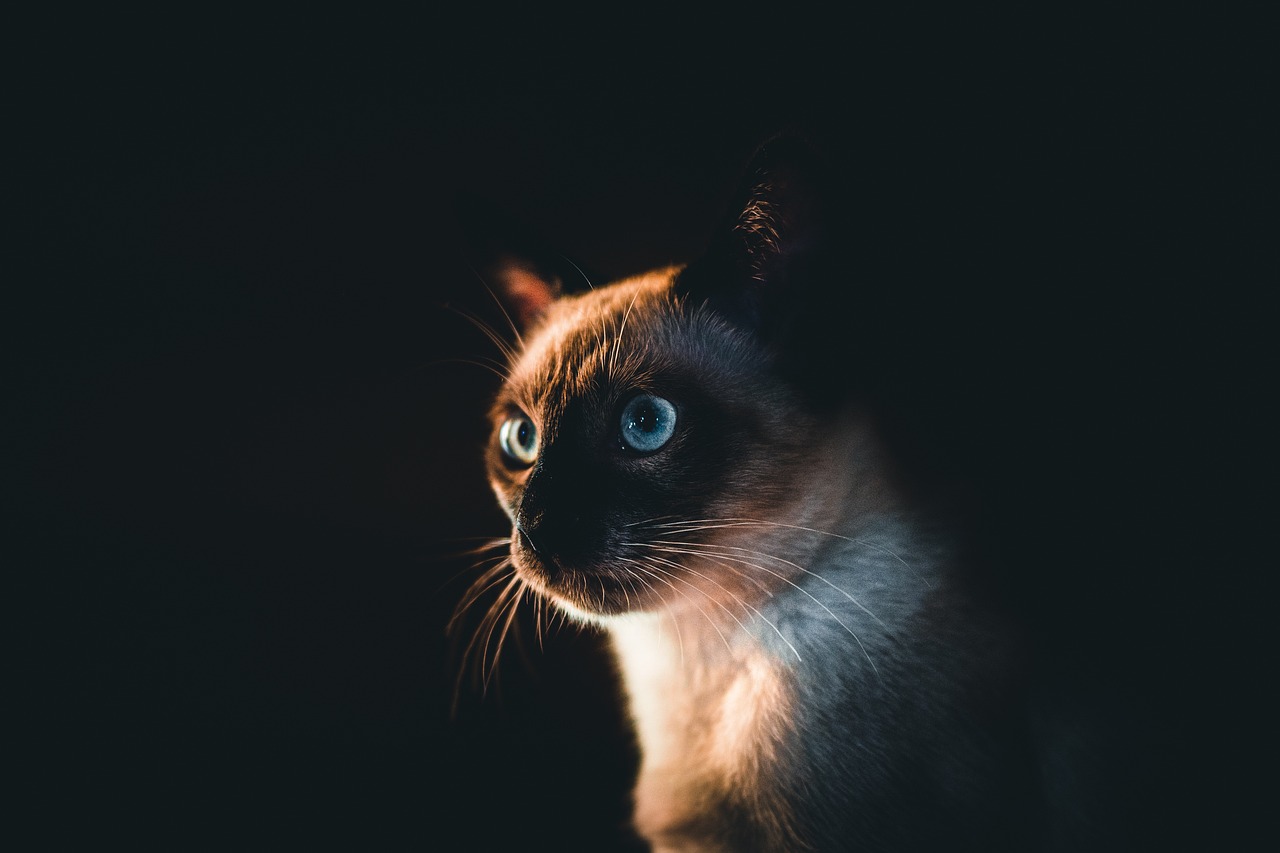
Nutritional Requirements
Understanding your cat's nutritional needs is crucial for their health and overall well-being. Just like humans, cats require a balanced diet to thrive. But what exactly do our feline friends need? The answer lies in several essential nutrients that play a vital role in their daily lives. Let’s break it down!
First and foremost, cats are obligate carnivores, which means their diet must be primarily composed of meat. This is where protein comes into play. High-quality protein sources are essential for maintaining muscle mass, supporting immune function, and providing energy. When choosing cat food, look for meat as the first ingredient, such as chicken, turkey, or fish. But don’t stop there; the protein content should be a significant percentage of the overall composition, typically around 30-40% for adult cats.
Next up is fat, which is often overlooked but is equally important. Fats are a source of energy and help in the absorption of certain vitamins. They also contribute to a healthy coat and skin. Look for foods that include healthy fats like fish oil or chicken fat, as these provide essential fatty acids that your cat needs to stay healthy.
Carbohydrates are another component of cat food, but they should be present in moderation. Cats don’t need a lot of carbs, but they do require some for energy and digestive health. Look for fiber sources like brown rice or peas, which can aid in digestion.
Additionally, vitamins and minerals are crucial for your cat's health. These micronutrients support various bodily functions, from bone health to immune system support. Key vitamins include Vitamin A, which is vital for vision and skin health, and B vitamins, which help with energy metabolism. Minerals like calcium and phosphorus are essential for strong bones and teeth.
When evaluating cat food, it’s important to read the labels carefully. Look for a statement from the Association of American Feed Control Officials (AAFCO) that indicates the food is complete and balanced for your cat’s life stage. This means it contains all the essential nutrients your cat needs.
To summarize, here’s a quick checklist of the key nutrients to look for in cat food:
- High-quality protein (meat as the first ingredient)
- Healthy fats (like fish oil or chicken fat)
- Moderate carbohydrates (with fiber sources)
- Essential vitamins and minerals (look for AAFCO approval)
By understanding these nutritional requirements, you can make informed choices about your cat's diet. Remember, what you feed your feline friend directly impacts their health, energy levels, and happiness. So, take the time to choose wisely and consult with your veterinarian if you have any doubts about your cat's dietary needs!
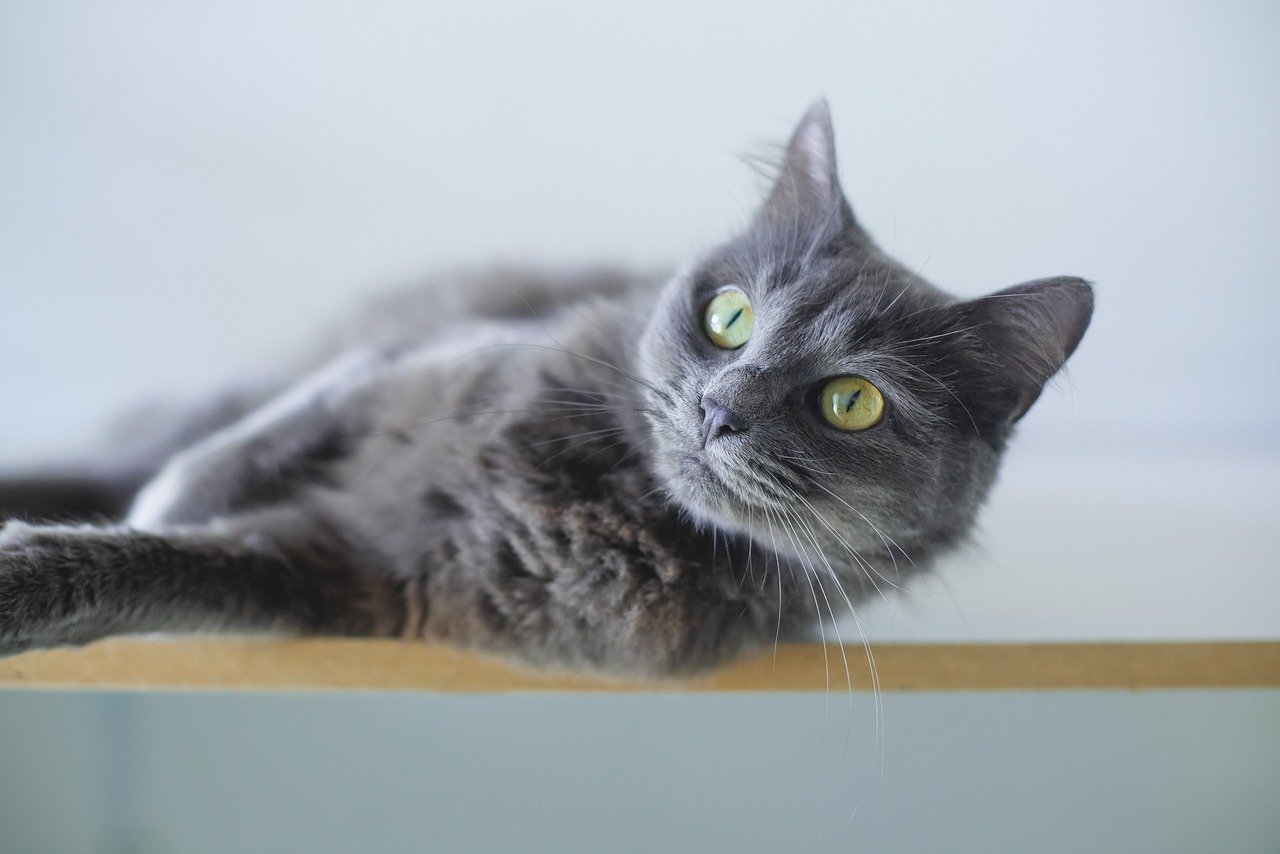
Types of Cat Food
When it comes to feeding your feline friend, understanding the different available is essential. Just like humans, cats have unique preferences and nutritional needs, and the type of food you choose can greatly impact their health and happiness. In this section, we'll explore the three main categories of cat food: dry, wet, and raw. By the end, you'll have a clearer idea of what might work best for your furry companion.
First up is dry cat food, often referred to as kibble. This option is incredibly popular among cat owners due to its convenience and long shelf life. Dry food is easy to store and serve, making it a go-to choice for busy households. However, while it has its perks, it also comes with some drawbacks. For instance, dry food typically has a lower moisture content, which is a critical factor for your cat's hydration. Cats are notorious for not drinking enough water, and relying solely on dry food can exacerbate this issue.
Next, we have wet cat food, which comes in cans or pouches. This type is often more appealing to cats because of its rich flavor and higher moisture content. In fact, wet food can help keep your cat hydrated, especially if they’re not big drinkers. Many cats thrive on wet food, enjoying the variety of flavors and textures it offers. However, it can be more expensive and requires refrigeration after opening, which might not suit everyone's lifestyle.
Lastly, there's raw cat food, which has gained popularity in recent years among pet owners looking for a more natural diet for their cats. Raw food typically consists of uncooked meat, organs, and bones, aiming to replicate a cat's natural prey. While proponents argue that this diet can lead to healthier, more energetic cats, it does come with its own set of challenges, such as the need for careful handling to avoid contamination and ensuring a balanced diet. It’s essential to do thorough research and consider consulting a veterinarian before transitioning your cat to a raw diet.
To help you better understand the differences, here’s a quick comparison table:
| Type of Cat Food | Pros | Cons |
|---|---|---|
| Dry Cat Food |
|
|
| Wet Cat Food |
|
|
| Raw Cat Food |
|
|
Choosing the right type of cat food can feel overwhelming, but understanding the options available is the first step toward making an informed decision. Remember, each cat is unique, and what works for one may not work for another. Take your time, observe your cat's preferences, and consider their health needs as you navigate the aisles of cat food options.
Dry Cat Food
When it comes to feeding your feline companion, often stands out as a popular choice among pet owners. Why is that? Well, for starters, dry cat food is incredibly convenient and cost-effective. It can be left out for your cat to nibble on throughout the day, which is perfect for those busy lifestyles where you might not always be around to serve meals. Plus, it typically has a longer shelf life compared to wet food, making it a practical option for many households.
One of the significant advantages of dry cat food is its ability to promote dental health. The crunchy texture can help reduce plaque and tartar buildup as your cat chews. Imagine it as a tiny toothbrush that your cat can enjoy! However, while dry food has its perks, it’s essential to consider some potential drawbacks as well. For instance, dry food contains less moisture than wet food, which can lead to hydration issues if your cat isn't drinking enough water.
When selecting dry cat food, it's crucial to look for high-quality brands that prioritize your cat’s health. Here are some key factors to consider:
- Protein Source: Ensure that the primary ingredient is a high-quality protein source, such as chicken or fish.
- Avoid Fillers: Stay away from brands that use fillers like corn or soy as primary ingredients.
- Added Nutrients: Look for foods that include essential vitamins and minerals to support overall health.
In summary, dry cat food offers a variety of benefits, including convenience and dental health advantages. However, it’s vital to balance it with other food types to ensure your cat stays well-hydrated and receives a complete diet. Remember, every cat is unique, so observing how your cat reacts to different food types is key in finding the right balance for their nutritional needs.
Benefits of Dry Food
When it comes to choosing the right cat food, dry food often stands out as a popular choice among cat owners. One of the primary benefits of dry cat food is its convenience. Imagine this: you can scoop out the desired amount, pour it into your cat's bowl, and you're done! No need to worry about refrigeration or spoilage, which is often a concern with wet food. Plus, dry food typically has a longer shelf life, making it a cost-effective option for pet parents.
Another significant advantage of dry cat food is its dental health benefits. The crunchy texture of kibble can help reduce plaque and tartar buildup on your cat's teeth, promoting better oral hygiene. Think of it as a natural toothbrush that not only satisfies your cat's crunch cravings but also contributes to their overall dental health. However, it's essential to note that while dry food can aid in dental care, it shouldn't be the sole solution. Regular dental check-ups and cleanings are still crucial for maintaining your cat's pearly whites.
Moreover, dry cat food is generally more economical than wet food. For those on a budget, dry kibble can be a lifesaver. You can often buy larger bags, which means fewer trips to the store and less hassle in the long run. This bulk buying can also help you save money, allowing you to allocate funds to other essential cat care needs, such as toys, litter, or even a visit to the vet.
Another point worth mentioning is the variety of flavors and formulations available in dry cat food. From chicken to fish, and even grain-free options, there's a dry food out there to suit every cat's taste preferences. This variety can make mealtime exciting for your feline friend, ensuring they don't get bored with their diet. Plus, many brands offer specialized formulas tailored to your cat's age, weight, or health needs, making it easier to find the perfect match for your pet.
However, while dry food has its perks, it’s important to remember that it should be balanced with other food types to ensure your cat receives adequate hydration. Cats are naturally inclined to consume moisture from their food, and dry food alone may not meet their hydration needs. Therefore, consider providing fresh water at all times and occasionally incorporating wet food into their diet for a balanced approach.
In summary, dry cat food offers numerous benefits, from convenience and dental health support to cost-effectiveness and variety. But just like any other food option, it’s important to choose high-quality brands that prioritize your cat's health. After all, your furry friend deserves the best!
Potential Drawbacks
While dry cat food offers a plethora of benefits, it's essential to consider some that could impact your cat's overall health and well-being. One of the primary concerns is the moisture content. Cats are naturally inclined to consume moisture through their food, especially since they evolved from desert-dwelling ancestors. Dry food typically contains less than 10% moisture, which can lead to dehydration if your cat doesn’t drink enough water. This is particularly crucial for cats that are prone to urinary tract issues, as a lack of hydration can exacerbate these problems.
Another drawback is the ingredient quality. Not all dry cat foods are created equal. Some brands may use low-quality fillers and artificial additives that do not provide adequate nutrition. It’s vital to scrutinize the ingredient list to ensure that the food contains high-quality proteins and essential nutrients. If your cat is consuming a diet filled with fillers, they may not be receiving the balanced nutrition they need, leading to potential health issues over time.
Furthermore, some cats can develop a preference for dry food and may refuse to eat anything else. This can create a challenging situation if you ever want to switch their diet or introduce wet food for added moisture. Cats can be notoriously finicky eaters, and once they get accustomed to dry food, they might turn their noses up at other options, making it difficult for you to provide a varied diet.
Lastly, there’s the concern of overfeeding. Dry food is calorie-dense, and it’s easy to pour more than your cat needs into their bowl. This can lead to obesity, which is a growing issue among house cats. To avoid this, it's crucial to measure out portions according to your cat's weight and activity level. Always refer to the feeding guidelines on the packaging, and consider consulting your veterinarian for personalized recommendations.
In summary, while dry cat food can be a convenient and cost-effective option, it’s essential to be aware of these potential drawbacks. Ensuring your cat's hydration, choosing high-quality ingredients, avoiding picky eating habits, and monitoring portion sizes are all critical steps in maintaining your cat's health and happiness.
- Can I mix dry and wet cat food? Yes, mixing dry and wet cat food can provide a balanced diet, offering the benefits of both moisture and crunch.
- How can I tell if my cat is dehydrated? Signs of dehydration include dry gums, lethargy, and a decrease in appetite. If you notice these symptoms, consult your veterinarian.
- What should I look for on a cat food label? Look for high-quality protein sources, minimal fillers, and essential nutrients. Avoid foods with artificial additives and by-products.
- How much dry food should I feed my cat? The amount depends on your cat's age, weight, and activity level. Always follow the feeding guidelines on the package and consult your vet for tailored advice.
Wet Cat Food
When it comes to pampering your feline friend, often takes the crown. Not only is it typically more palatable, but it also provides a wealth of benefits that can make meal times a delightful experience for your cat. Imagine your kitty indulging in a savory dish that not only satisfies their taste buds but also contributes to their overall health. But what makes wet cat food so special? Let's dive into its advantages and what you need to consider when choosing the right kind for your furry companion.
One of the standout features of wet cat food is its high moisture content. Cats are naturally inclined to get their hydration from their food, especially since they may not drink enough water on their own. This is particularly important because dehydration can lead to serious health issues, such as kidney problems or urinary tract infections. By incorporating wet food into your cat's diet, you're essentially helping them stay hydrated while making mealtime more enjoyable. Many cat owners report that their pets are more enthusiastic about eating wet food, and it can be a great way to entice picky eaters.
Additionally, wet cat food is often richer in protein compared to its dry counterpart. Cats are obligate carnivores, meaning they require a diet high in animal proteins to thrive. This makes wet food an excellent choice for providing the necessary nutrients that support muscle development and overall vitality. However, not all wet foods are created equal. When selecting a brand, it's crucial to check the ingredient list. Look for options that list a specific source of animal protein, such as chicken or fish, as the first ingredient. This ensures your cat is getting the quality nutrition they deserve.
While wet cat food has numerous benefits, there are a few considerations to keep in mind. For instance, it can be more expensive than dry food, and it typically has a shorter shelf life once opened. Therefore, if you opt for wet food, you might want to purchase it in smaller quantities to avoid waste. Additionally, some cats may experience dental issues if wet food is their sole diet, as it doesn’t provide the same level of abrasion that dry food does for their teeth. To strike a balance, you might consider alternating between wet and dry food or incorporating dental treats into their routine.
In summary, wet cat food can be a fantastic addition to your cat's diet, offering hydration, palatability, and essential nutrients. Just remember to choose high-quality brands and maintain a balanced diet that includes both wet and dry options. Your cat will thank you with every purr and playful leap!
- Is wet cat food better than dry cat food? Wet cat food offers higher moisture content and is often more palatable, making it a good choice for hydration and taste. However, a balanced diet that includes both wet and dry food is often recommended.
- How often should I feed my cat wet food? It depends on your cat’s dietary needs, age, and health. Generally, you can feed wet food once or twice a day, but consult your veterinarian for personalized recommendations.
- Can I leave wet cat food out all day? It's best to avoid leaving wet food out for extended periods as it can spoil quickly. Serve it fresh and remove any uneaten portions after a couple of hours.
- What should I look for in wet cat food? Look for high-quality protein sources, minimal fillers, and avoid artificial additives. The first ingredient should ideally be a named meat source.
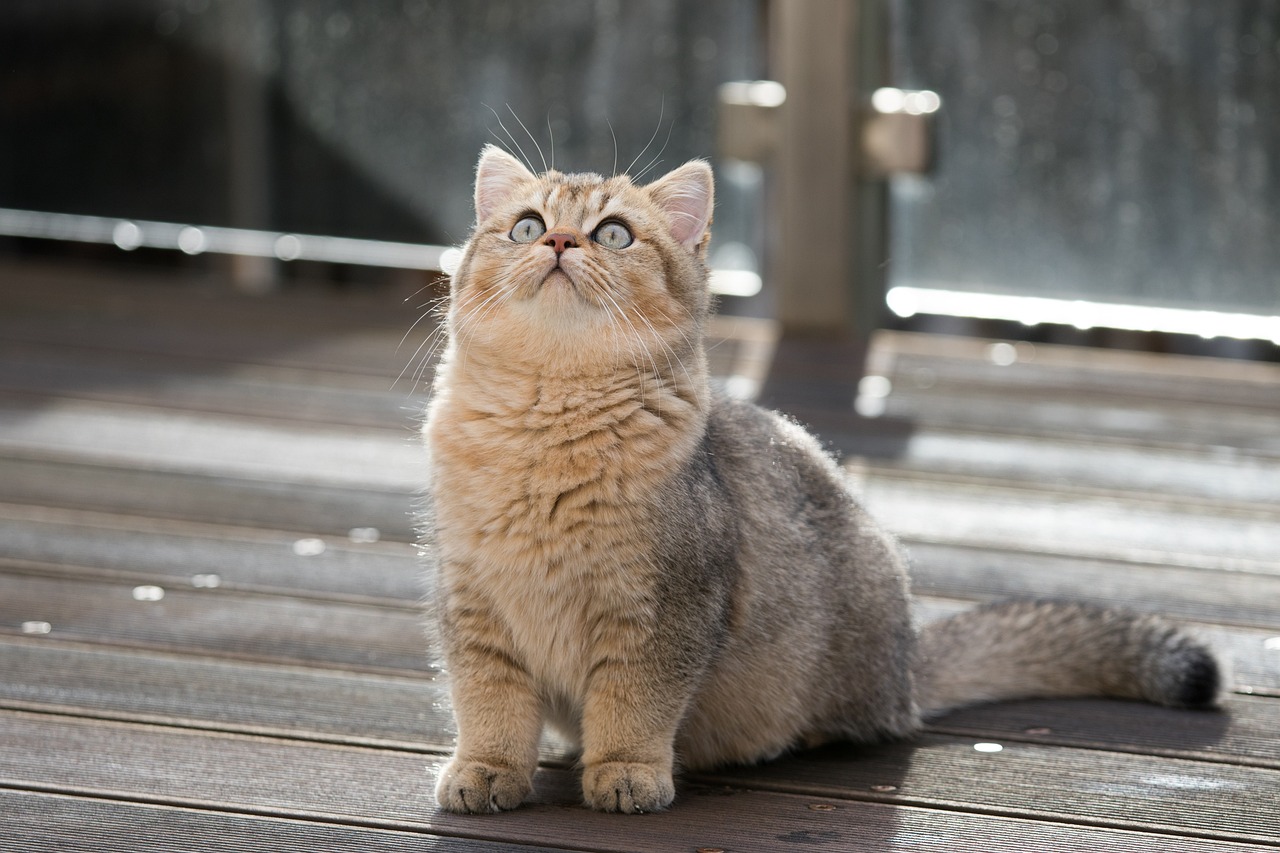
Ingredient Quality
When it comes to choosing the right cat food, is paramount. Just like you wouldn’t want to eat processed junk every day, your feline friend deserves the best nutrition possible. But how do you know what’s good and what’s not? It all starts with understanding the ingredients listed on the packaging. A quick glance at the label can reveal a lot about the food's nutritional value and overall quality.
First off, look for a source of high-quality protein as the first ingredient. Cats are obligate carnivores, meaning they thrive on a diet rich in meat. Ingredients like chicken, turkey, or fish should be at the top of the list. If you see vague terms like “meat by-products” or “animal meal,” it’s a red flag. These can indicate lower-quality sources that might not provide the essential nutrients your cat needs.
Moreover, it’s not just about the protein; the quality of carbohydrates matters too. Cats don’t require grains in their diet, but if they are included, they should come from whole sources like brown rice or oats rather than fillers like corn or wheat. Fillers can lead to weight gain and other health issues. Always remember, a high-quality cat food should have a balanced ratio of protein, fats, and carbohydrates.
Let’s break it down a bit further. Here’s a quick table to help you understand the types of ingredients you should look for versus those you should avoid:
| Quality Ingredients | Poor Quality Ingredients |
|---|---|
| Real meat (chicken, turkey, fish) | Meat by-products |
| Whole grains (brown rice, oats) | Fillers (corn, soy, wheat) |
| Healthy fats (fish oil, chicken fat) | Artificial preservatives (BHA, BHT) |
| Natural fruits and vegetables | Artificial colors and flavors |
In addition to the primary ingredients, keep an eye out for additives. Some additives can be beneficial, like omega fatty acids for a shiny coat or probiotics for digestive health. However, others can be harmful. For instance, artificial preservatives and colors can lead to long-term health issues. Always opt for products that use natural preservatives like vitamin E (mixed tocopherols) instead.
Finally, understanding labels can feel like deciphering a secret code. Don’t be afraid to do a little research on unfamiliar terms. Websites dedicated to pet nutrition can provide insights into what certain ingredients mean for your cat's health. By being a savvy shopper, you can ensure your cat is getting the best possible nutrition, leading to a happier and healthier life.
- What should be the first ingredient in cat food? Look for a high-quality source of protein, such as real meat.
- Are grains bad for cats? Cats don’t need grains, but if included, they should come from whole sources rather than fillers.
- How can I tell if a cat food is high quality? Check for named meat sources, avoid fillers, and look for natural preservatives.
- What additives should I avoid in cat food? Steer clear of artificial colors, flavors, and preservatives like BHA and BHT.
Understanding Labels
Deciphering cat food labels can feel like trying to read a foreign language, especially with all the technical jargon and marketing buzzwords thrown around. But don't let that overwhelm you! Understanding these labels is crucial for ensuring your feline friend gets the best nutrition possible. First off, look for the Association of American Feed Control Officials (AAFCO) statement on the packaging. This indicates that the food meets the minimum nutritional standards established for pet food. If the label says, “complete and balanced,” it means the food contains all the essential nutrients your cat needs.
Next, pay close attention to the ingredient list. Ingredients are usually listed in descending order by weight, which means the first few items are the most significant. Ideally, the first ingredient should be a high-quality source of protein, such as chicken, beef, or fish. Cats are obligate carnivores, meaning they thrive on a diet rich in animal protein. Avoid foods that list fillers like corn or wheat as the primary ingredients, as these don't provide much nutritional value.
It's also important to be aware of by-products. While some by-products can be a decent source of nutrition, others may not be. For example, “chicken by-product meal” can be a good source of protein, but “meat by-products” can be vague and may include lower-quality ingredients. When in doubt, do a little research on what specific by-products entail.
Another aspect to consider is the presence of preservatives and additives. Some preservatives, like tocopherols (vitamin E), are natural and beneficial, while others, such as BHA and BHT, are synthetic and potentially harmful. Always opt for cat foods that use natural ingredients and preservatives whenever possible.
To help you navigate the world of cat food labels, here’s a quick table summarizing what to look for and what to avoid:
| What to Look For | What to Avoid |
|---|---|
| High-quality protein sources (e.g., chicken, fish) | Fillers (e.g., corn, soy) |
| AFFCO statement confirming nutritional adequacy | Vague terms like "meat by-products" |
| Natural preservatives (e.g., tocopherols) | Synthetic preservatives (e.g., BHA, BHT) |
Remember, the goal is to provide your cat with a balanced diet that keeps them healthy and happy. Take your time to read the labels and don’t hesitate to ask questions if you’re unsure about something. After all, your cat’s health is worth the effort!
- How can I tell if the cat food is high quality? Look for high-quality protein as the first ingredient, a clear AAFCO statement, and minimal fillers.
- Are by-products bad for my cat? Not necessarily, but it’s important to know what specific by-products are included in the food.
- What are the best preservatives for cat food? Natural preservatives like tocopherols are generally safer than synthetic ones.
- Should I consult my vet about cat food? Yes, especially if your cat has special dietary needs or health issues.
Common Additives
When it comes to choosing the right cat food, understanding is essential for ensuring your furry friend gets the best nutrition possible. Many commercial cat foods contain various additives that can either enhance the food's nutritional value or detract from it. So, what should you be on the lookout for when scanning those ingredient lists?
First off, let's talk about beneficial additives. These are ingredients that can provide health benefits to your cat. For instance, probiotics are often added to support digestive health, while omega fatty acids can promote a shiny coat and healthy skin. Additionally, some brands might include taurine, an essential amino acid that supports heart and eye health. These additives can make a significant difference in your cat's overall well-being.
However, not all additives are created equal. Some can be downright harmful. For example, many cat foods contain artificial colors and preservatives, which serve no nutritional purpose and can potentially lead to health issues over time. It's wise to avoid foods with ingredients like BHA, BHT, and ethoxyquin, as these have been linked to various health concerns in pets.
To help you navigate this complex landscape, here’s a quick breakdown of additives to look for and avoid:
| Additives to Look For | Additives to Avoid |
|---|---|
| Probiotics | Artificial Colors |
| Omega Fatty Acids | BHA (Butylated Hydroxyanisole) |
| Taurine | BHT (Butylated Hydroxytoluene) |
| Vitamins and Minerals | Ethoxyquin |
In conclusion, being informed about the in cat food can empower you to make better choices for your feline companion. Always read the labels carefully, and don't hesitate to consult your veterinarian if you're unsure about specific ingredients. After all, your cat relies on you to provide the best possible nutrition, and understanding these additives is a crucial step in that journey.
- What are probiotics and why are they important for cats? Probiotics are beneficial bacteria that help maintain a healthy gut flora, which is essential for digestion and overall health.
- Are artificial preservatives harmful to my cat? Yes, some artificial preservatives have been linked to health issues, so it's best to avoid them whenever possible.
- How can I tell if a cat food is high quality? Look for clear labeling of quality ingredients, including specific meat sources and minimal fillers or artificial additives.
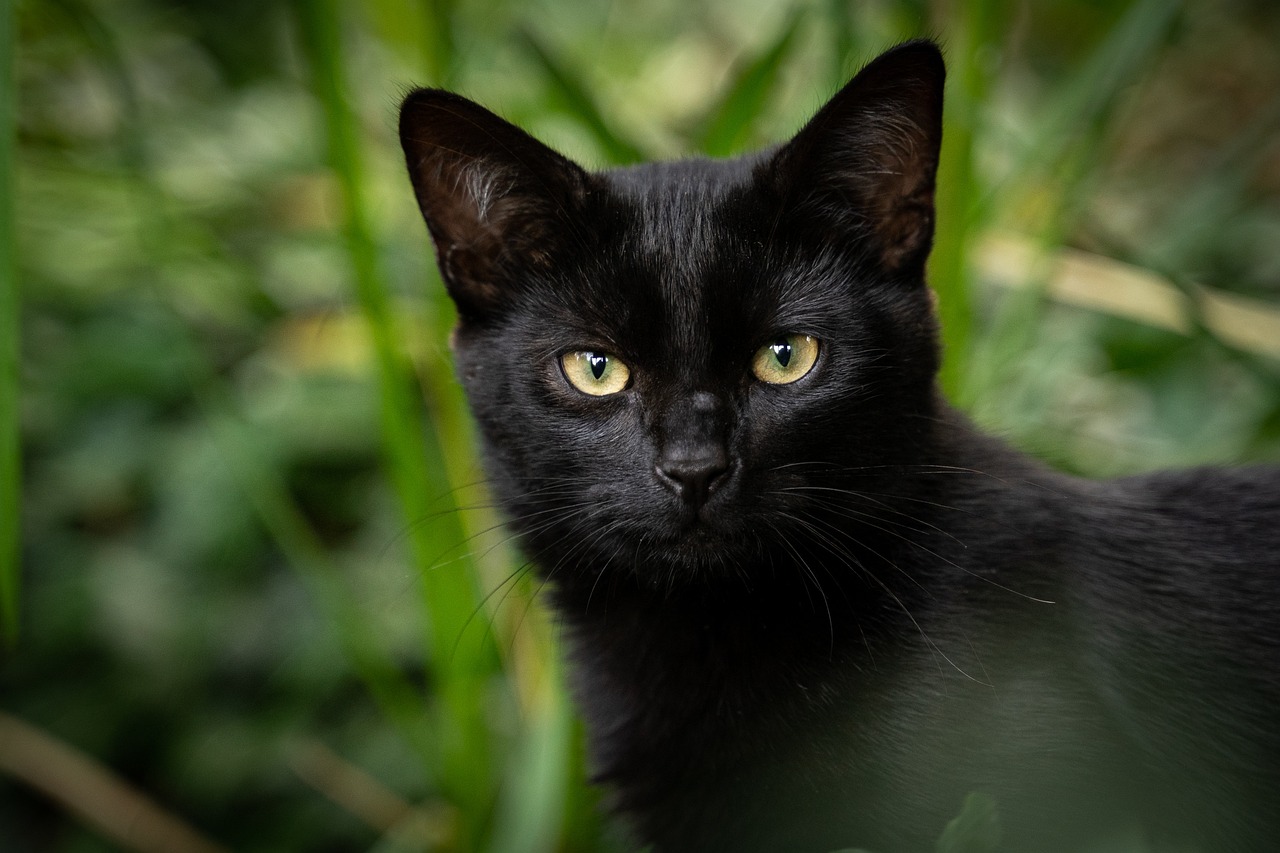
Special Dietary Needs
When it comes to our furry companions, not all cats are created equal. Just like humans, cats can have unique dietary requirements based on their health conditions, age, and lifestyle. Understanding these special needs is vital to ensuring your cat remains healthy and happy. For instance, if your cat is a senior, they might require food that is easier to digest and lower in calories to prevent obesity. On the other hand, kittens need a diet rich in protein and fat to support their rapid growth.
Some cats may also suffer from food allergies or intolerances. Common allergens include beef, dairy, and fish. If you notice your cat scratching excessively, experiencing gastrointestinal issues, or having skin irritations, it might be time to reevaluate their diet. In such cases, a hypoallergenic diet can be beneficial. These diets typically contain novel proteins, such as duck or rabbit, which your cat may not have been exposed to before, reducing the risk of an allergic reaction.
Moreover, certain health issues, like diabetes or kidney disease, require specific dietary considerations. For example, diabetic cats benefit from a high-protein, low-carbohydrate diet to help manage their blood sugar levels. Conversely, cats with kidney disease often need a diet lower in protein and phosphorus to ease the burden on their kidneys.
Here’s a quick breakdown of common special dietary needs:
| Condition | Dietary Requirement |
|---|---|
| Obesity | Low-calorie, high-fiber food |
| Diabetes | High-protein, low-carbohydrate food |
| Kidney Disease | Low-protein, low-phosphorus food |
| Food Allergies | Hypoallergenic or novel protein diet |
| Senior Cats | Easily digestible, low-calorie food |
| Kittens | High-protein, high-fat food |
It’s essential to monitor your cat’s health regularly and adjust their diet as needed. Always consult with your veterinarian before making any significant changes to your cat’s diet, especially if they have existing health conditions. Your vet can provide tailored advice based on your cat’s specific needs and may even recommend specialized formulas that cater to their health requirements.
Q: How do I know if my cat has special dietary needs?
A: Look for signs such as excessive scratching, weight changes, or digestive issues. If you have concerns, consult your veterinarian for guidance.
Q: Can I switch my cat's food suddenly?
A: It’s best to transition to a new food gradually over a week to avoid digestive upset. Mix a small amount of the new food with the old and increase the new food's proportion daily.
Q: Are there specific brands recommended for special dietary needs?
A: Yes, many brands offer specialized formulas for various health conditions. Your vet can recommend the best options based on your cat’s needs.
Q: How often should I feed my cat with special dietary needs?
A: This can vary based on the specific needs and health conditions of your cat. Generally, it's advisable to follow the feeding guidelines provided by your veterinarian or the food packaging.
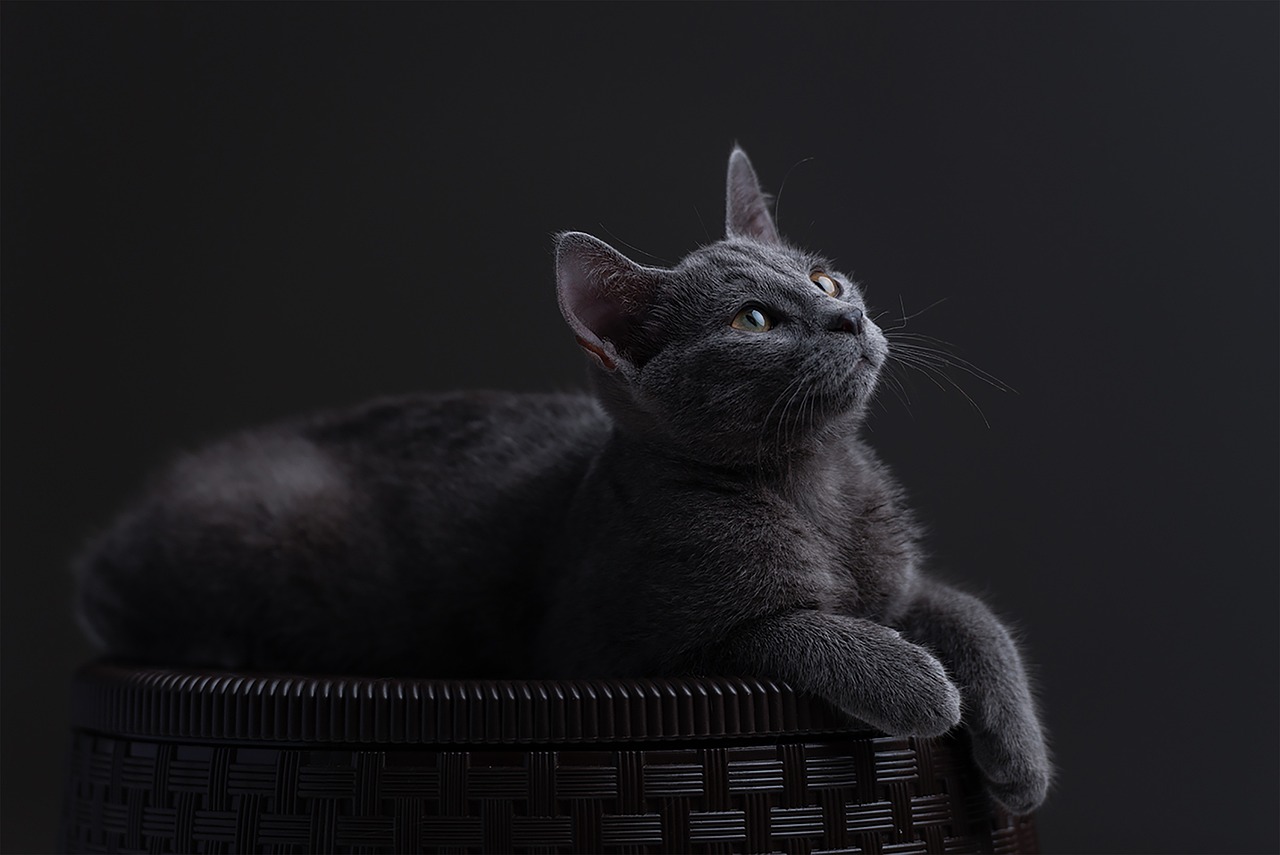
Consulting Your Veterinarian
When it comes to choosing the right cat food, one of the best decisions you can make is to consult your veterinarian. They are the experts who understand your cat's unique health needs and can provide tailored advice that you might not find in a general guide. Think of your vet as your cat's personal nutritionist; they have the knowledge and experience to help you navigate the often overwhelming world of pet food.
Before you make any changes to your cat's diet, it's crucial to discuss your plans with your veterinarian. They can assess your cat's current health status, taking into account factors such as age, weight, activity level, and any existing health conditions. For instance, if your cat is overweight, your vet might recommend a specific type of food that is lower in calories but still provides essential nutrients. On the other hand, if your cat has allergies or sensitivities, they can guide you toward hypoallergenic options that won’t upset their stomach.
Here are a few reasons why consulting your veterinarian is essential:
- Personalized Recommendations: Every cat is different. What works for one may not work for another. Your vet can provide recommendations based on your cat's specific health needs.
- Understanding Health Conditions: If your cat has any medical issues, your vet can suggest foods that support their condition, such as renal diets for cats with kidney disease.
- Monitoring Progress: After changing your cat’s diet, regular check-ins with your vet can help you monitor your cat's health and make adjustments as needed.
Moreover, your vet can help you interpret the labels on cat food packages. They can explain the significance of certain ingredients and help you understand which nutrients are necessary for your cat. This knowledge can empower you to make informed decisions when shopping for cat food. Remember, just because a product is marketed as "premium" or "natural" doesn't mean it’s the best choice for your feline friend.
In conclusion, while it might be tempting to choose cat food based on marketing claims or personal preferences, consulting your veterinarian is the best way to ensure that your cat receives the nutrition they need for a healthy and happy life. They can help you sift through the noise and find the right balance that suits your cat's individual needs.
Here are some common questions that cat owners often ask regarding their pet's diet:
- How often should I feed my cat? Most adult cats do well with two meals a day, but kittens may require more frequent feedings.
- Can I mix wet and dry food? Yes! Mixing can provide a balanced diet, but be mindful of the overall caloric intake.
- Is grain-free food better for my cat? Not necessarily. Some cats do well on grain-free diets, but others may thrive on foods that contain grains. It's best to consult your vet.
Frequently Asked Questions
- What are the essential nutrients my cat needs?
Cats require a balanced diet that includes proteins, fats, carbohydrates, vitamins, and minerals. Look for high-quality sources of protein like meat or fish, as these are vital for their overall health and energy levels.
- Is dry cat food better than wet cat food?
It really depends on your cat's preferences and needs! Dry cat food is convenient and can help with dental health, while wet cat food is often more palatable and provides additional moisture. A mix of both can be beneficial!
- How can I tell if a cat food brand is high-quality?
Check the ingredient list! High-quality cat food should have real meat as the first ingredient, minimal fillers, and no artificial additives. Look for brands that are transparent about their sourcing and manufacturing processes.
- What should I do if my cat has special dietary needs?
If your cat has health issues or specific dietary requirements, consult your veterinarian. They can recommend specialized diets that cater to your cat's unique health needs, ensuring they get the right nutrition.
- How often should I consult my veterinarian about my cat's diet?
It's a good idea to consult your veterinarian regularly, especially if you notice any changes in your cat's health or behavior. They can help you adjust your cat's diet as needed to keep them healthy and happy.
- Can I mix different types of cat food?
Yes, mixing different types of cat food can be beneficial! Just ensure that the combined diet meets your cat's nutritional needs and that they are transitioning gradually to avoid digestive issues.
- Are there any harmful additives I should avoid in cat food?
Yes, some additives can be harmful. Avoid foods with artificial colors, flavors, and preservatives. It's best to choose foods with natural ingredients and beneficial additives like probiotics and omega fatty acids.

